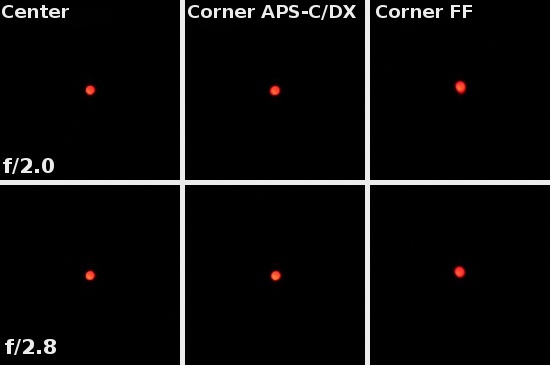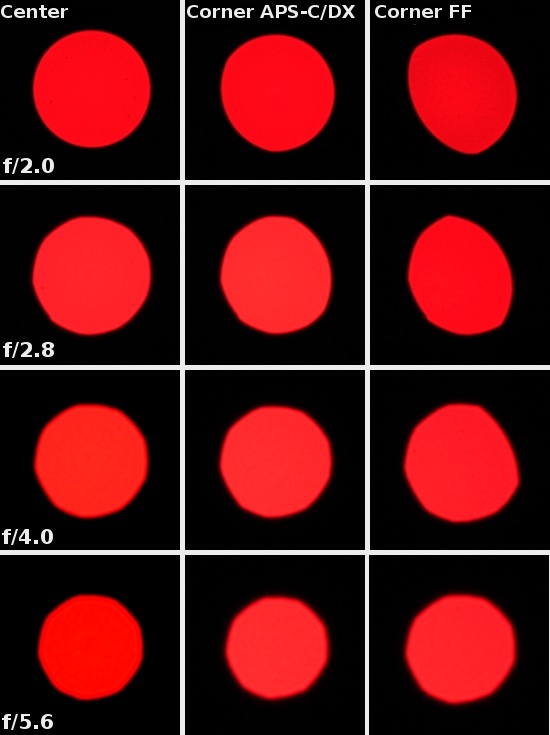Nikon Nikkor AF-S 200 mm f/2G ED VRII
7. Coma, astigmatism and bokeh

The similar performance we get in the case of astigmatism. The average value between horizontal and vertical MTF50 function values amounted to just 2.6% which is a negligible result and also one worth our decisive praise.
Please Support UsIf you enjoy our reviews and articles, and you want us to continue our work please, support our website by donating through PayPal. The funds are going to be used for paying our editorial team, renting servers, and equipping our testing studio; only that way we will be able to continue providing you interesting content for free. |
- - - - - - - - - - - - - - - - - - - - - - - - - - - - - - - - - - - - - - - - - - - - - - - -
Below we present some photos of out-of-focus point-like diode image, positioned in the frame centre, in the corner of the DX sensor and full frame. They can be used in assessing the blur and also get you an idea how the spherical aberration is corrected. The fact that the light distribution within those circles is almost perfectly even can prove that last aberration is corrected very well.







